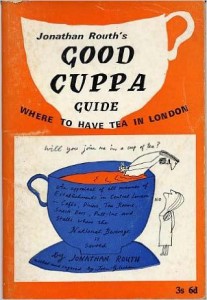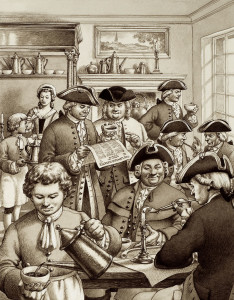Hampshire
The high-flying Oxford graduate Robert Fearnley-Whittingstall visited Burley Manor in the New Forest a few months before he married gardening writer Jane in 1962. Three years later, celebrity chef Hugh, of River Cottage fame, was born. According to those who approved the hotel, the owners used their own ‘vegetables, cream, poultry and pigs ‘. So doubtless, the merits of locally sourced produce were passed onto the River Cottage presenter. However, it is unlikely that Hugh’s cooking skills were inherited from his Dad, because, according to Jane, the only dish her husband could cook for the young ladies he entertained as a bachelor was devilled kidneys!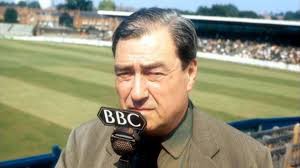
John ‘the Voice of Cricket’ Arlott, who started his career as a policeman in Basingstoke before being discovered by poet and BBC producer Geoffrey Grigson, was a oenophile and gastronome who enjoyed great hospitality at the White Horse Inn, Droxford, which just happens to be a few miles from the ‘Bat and Ball ‘pub in Hambledon, where cricket began in the eighteenth century.
In the early sixties ‘motels ‘ were becoming popular, although one doesn’t expect to find many in the Good Food Guide. However, there are at least two, one of which, ‘The Royal Oak Motel’ at Newington, near Hythe, offered, according to the approvers a delicious, though expensive selection of continental and English dishes, including escalope in Marsala ( 14/-) and frog’s legs ( 10s 6d). It is not known whether one of the approvers, Geoffrey Finsberg, a Tory councillor at just 24, who became a senior government minister in the seventies, dined here on expenses. Continue reading

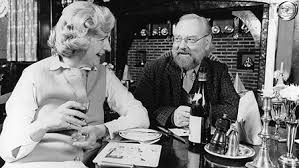
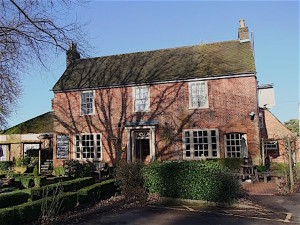 A few days ago we heard on the radio that there was much more violence during the Great Train Robbery of 1963 than has been reflected in the over-romanticised films about it. We also learnt that the notorious Leatherslade Farm, where the robbers held out, is no more.
A few days ago we heard on the radio that there was much more violence during the Great Train Robbery of 1963 than has been reflected in the over-romanticised films about it. We also learnt that the notorious Leatherslade Farm, where the robbers held out, is no more.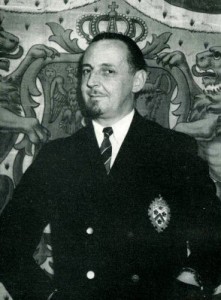
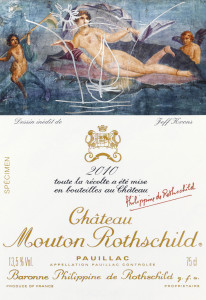

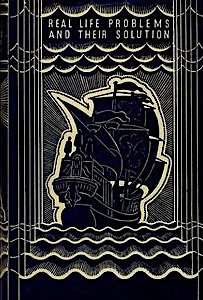
 Found, part of a menu for the Chelsea Arts Club Ball, which was held at the Albert Hall, March 4th 1914:
Found, part of a menu for the Chelsea Arts Club Ball, which was held at the Albert Hall, March 4th 1914: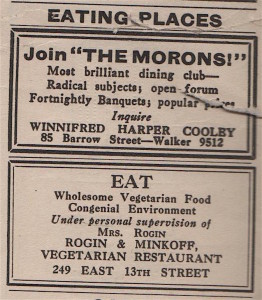
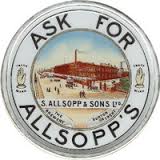
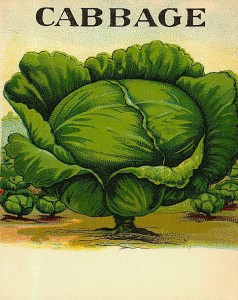 Found, The Dinner Knell, the book published just months before his death aged 52 by prolific journalist and fin de siecle expert T(homas ) Earle Welby, (1881 – 1933). The premature demise of Welby, who was known to his New Statesman readers as ‘Stet’, may have had something to do with a love of food that informs much of his writing, including this particularly lively excursion into the world of gastronomy.
Found, The Dinner Knell, the book published just months before his death aged 52 by prolific journalist and fin de siecle expert T(homas ) Earle Welby, (1881 – 1933). The premature demise of Welby, who was known to his New Statesman readers as ‘Stet’, may have had something to do with a love of food that informs much of his writing, including this particularly lively excursion into the world of gastronomy.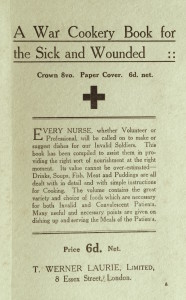
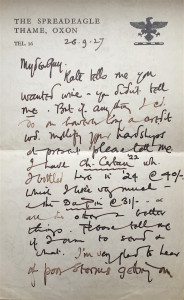
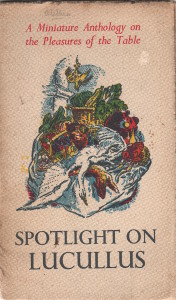
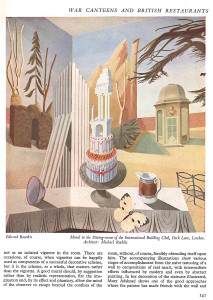 It is a sad fact that most of the best mural paintings executed in canteens, cafes and restaurants in the UK no longer exist. Unlike those executed for some public buildings, those in private premises are subject to the taste of those who take over the property. By far the most notorious example was, of course, the murals executed around 1913 on the walls of Rudolf Stulik’s Restaurant de la Tour Eiffel in Percy Street, just off Tottenham Court Road, by Wyndham Lewis, which were later painted over.
It is a sad fact that most of the best mural paintings executed in canteens, cafes and restaurants in the UK no longer exist. Unlike those executed for some public buildings, those in private premises are subject to the taste of those who take over the property. By far the most notorious example was, of course, the murals executed around 1913 on the walls of Rudolf Stulik’s Restaurant de la Tour Eiffel in Percy Street, just off Tottenham Court Road, by Wyndham Lewis, which were later painted over.

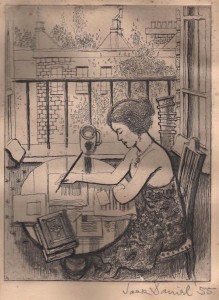 Arguably one of the two greatest twentieth century English writers on food (the other being Elizabeth David), Jane Grigson ( 1928 – 1990) was the subject of this intriguing etching by the artist Jack Daniel, who knew her in the early fifties when she was living in west London as a young picture researcher working for the publisher George Rainbird.
Arguably one of the two greatest twentieth century English writers on food (the other being Elizabeth David), Jane Grigson ( 1928 – 1990) was the subject of this intriguing etching by the artist Jack Daniel, who knew her in the early fifties when she was living in west London as a young picture researcher working for the publisher George Rainbird.